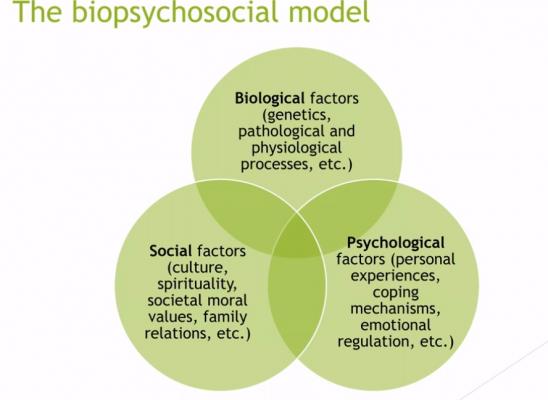BFRB Precision Medicine Initiative (BPMI): The Latest Projects and News

Online test
Find out the severity of your symptoms with this free online test
2021 is off to an exciting start for the BFRB Precision Medicine Initiative! Even with the restrictions resulting from the coronavirus pandemic, researchers remain committed to the precision medicine approach and advancing the goals of the BPMI. Projects are awaiting publication, data analysis is revealing new insights into BFRBs, research is continuing, and support for treatment advancement remains strong. The TLC Foundation for BFRBs has released updates over the past few months. Here are the highlights of what’s been happening with the BPMI:
Genetics Analysis Update
In October 2020, the BPMI released an update on the status of the genetic research currently being conducted by Dr. Jeremiah Scharf. Although slowed by COVID-19 restrictions, Dr. Scharf’s work on TTM and SPD heritability continues. As of the time of the update, the National Institute of Mental Health (NIMH) Repository had completed extraction of whole-blood derived DNA for all available samples and shipped them to the Broad Institute where they will conduct genome-wide single nucleotide polymorphism (SNP) array genotyping. Once completed, Dr. Scharf will analyze TTM, SPD, and control samples from BPMI, as well as existing TTM DNA samples from the NIMH/TLC Genetics Repository, for the presence of rare copy number variation and determine TTM heritability, and the degree of shared heritability between TTM and other obsessive-compulsive disorders.
December Advisory Board Update
In December 2020, members of TLC's Scientific Advisory Board presented a video update on the BFRB Precision Medicine Initiative’s current studies and identified goals for 2021 and beyond. The panel of investigators discusses initial findings from the largest BFRB research study ever conducted. The information discussed includes preliminary results from current studies including neuroimaging, identification of BFRB subtypes, emotional regulation, and children and BFRBs as well as implications for treatment. The board also identified plans for the new year.
Research Updates
The current research studies are in various states of completion. Some are pending publication while others are still in the process of data analysis.
BFRB Subtypes
Jon E. Grant, MD, JD, MPH reported on the research related to BFRB subtypes. Data analysis has been completed. The article has been written and submitted for publication. It is currently under review and awaiting approval. COVID-19 has created delays but approval is expected soon.
This study focused on the identification of BFRB subtypes. Results identified three distinct subtypes of TTM, and two SPD subtypes. The TTM subtypes identified were:
- Adults with increased focused pulling but infrequent and milder pulling urges, who are high on sensory sensitivity;
- Adults with low pulling awareness. This was the most common subtype
- Adults who pull to regulate unpleasant emotions, with high difficulty resisting pulling and increased impulsivity and perfectionism.
The two SPD subtypes identified were:
- Adults with frequent, intense urge to pick and minimal control over picking. Their picking is related to aversive emotions and automatic picking. This is the most common subtype.
- Mild picking and reduced picking urges.
These findings add to the understanding of the mechanisms of BFRBs and may lead to targeted interventions based on subtypes.
Imaging and Brain Mapping
Researcher Darin Dougherty, MD, reported on the findings from this project focused on structural and connectivity imaging of the brain in people with BFRBs. Unprecedented in the field of BFRB research, this study looked at the structures of the brain as well as functionality in real-time to determine how the brain responds at rest and in motion, and on various tasks for people with BFRBs. Mapping can help to determine similarities and differences in structure and function between TTM and SPD subtypes. This type of data is the foundation for the development of targeted treatment interventions specific to the subtype. The paper has been completed and is pending submission.
Emotional Regulation and Response Inhibition
John Piacentini, Ph.D. reported on the preliminary findings in this area of study. The goal is to better understand how emotional regulation and response inhibition impact the severity and degree of impairment for people with TTM and SPD. Early results were somewhat surprising. It was expected that emotional regulation would be a strong factor in severity. What the data suggests is that poor response inhibition and impulsivity were more strongly associated with severity. The primary predictor for severity was depression suggesting that over time, picking or pulling can lead to mood disruption. Future studies may seek to determine how these findings fit into the imaging data, possibly allowing for more tailored treatment options.
Children and BFRBs
Researcher Emily Ricketts, Ph.D., reported on preliminary findings on research with children who have TTM and SPD. Examining clinical differences between children with TTM, SPD, or both, data suggest that children with TTM experience more depression. All groups showed high levels of anxiety. Both TTM and SPD subjects showed poor distress tolerance and difficulty dealing with negative emotions. Age was also found to be related to impairment. Increases in age corresponded with increased depression, poor distress tolerance, increased impulsivity, greater suppression of emotions, and decreased quality of life. Interestingly, there was no significant difference in family functioning which is consistent with mixed results from other research. The researchers plan to reexamine family functioning using a broader measure to examine function.
Forward Focus
The panel presented plans for 2021 and beyond. These goals include continued research aimed at the development of treatment as well as the expansion of best practices knowledge in the field of BFRBs.
2021 goals include:
- The development of research proposals focused on novel treatments for BFRBs.
- Continued focus on genetics and neuroimaging to further expand the understanding of the neurobiological foundations of BFRBs
- The development of a patient registry for clinical trials
Goals for 2021 and beyond include:
- The pursuit of grant funding and federal sources of funding for continued research. TLC plans to hold meetings to support these efforts.
- UCLA will maintain an interactive website for BFRB researchers
- TLC will continue to disseminate BPM research breakthroughs and treatment information
- TLC will support treatment through research grants to early-career scientists and pilot studies
Launched in 2014, the TLC Foundation for BFRBs Precision Medicine (BPM) Initiative remains committed to applying the precision medicine approach to the goal of finding the most effective treatments for BFRBs.
More updates to come!
References
1. Lee, L. (n.d.). BPM update - October 2020 - The TLC Foundation for BFRBs. Retrieved from https://www.bfrb.org/index.php?option=com_content&view=article&id=623:bpm-update-october-2020&catid=20:articles-research
2. TLC Foundation for BFRBs. (2020, December 8). BFRB precision medicine update - December 2020 [Video]. Retrieved from https://youtu.be/HlmhlcsxdYM
Online test
Find out the severity of your symptoms with this free online test
Start your journey with SkinPick
Take control of your life and find freedom from skin picking through professional therapy and evidence-based behavioral techniques.
Start Now



